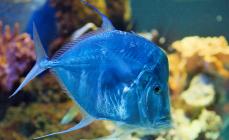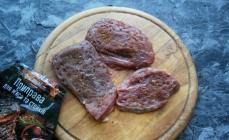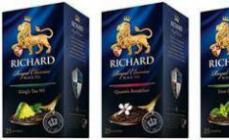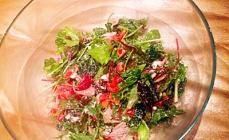Sugar Syrope cooking rules
Part one
The most common way to prepare jam is the cooking of berries or fruits in sugar syrup, while only white and pure sugar sand uses, as the sand with a yellowish tone gives a flavor of the burned sugar. You can cook jam on honey (in an equidal amount) instead of sugar. For jam from white cherry, grapes, strawberries, apricots, you can prepare syrup from Rafinada Sugar. For the preparation of the syrup in a pure pelvis (copper, aluminum), the measured amount of sugar sand is poured, poured with water (according to the recipe), after which the dishes put on the middle fire and the spoon or the noise are stirred until the sugar is completely dissolved. Then the syrup is adjusted to a boil and boil 1-2 minutes. If any particles or syrup are detected in the syrup, it is lit by egg protein, and then filtered through the fabric. Do it as follows. On every kilogram of sugar, after its complete dissolution, half a teaspoon is added well whipped egg protein, thoroughly stirred and heated on slow heat to 60-70 degrees (but in no case to boiling), while the egg protein is coincided and popling On the surface in the form of foam, fond of foreign particles. The resulting foam is removed by a spoon. Then the syrup is adjusted to a boil, boil 1-2 minutes and filter through a coarse cloth or a gauze four-layer bag. Then the syrup is removed from the fire and laid berries or fruits into it. The quality of the welded jam and its ability to prolonged storage depends on the right ratio of sugar and berries or fruits.
Part two
The concentration of syrup depends on the acidity of raw materials (usually take 300-500 g of sugar per 1 liter of water). The ratio of fruits and syrup, regardless of the container (in percent) - 55:45 or 60:40
Sugar at a concentration of it in an aqueous solution not lower than 60% has good preservative properties and prevents the development of various microorganisms.
Depending on the preliminary preparation of fruits and the character of cooking, you can get different products: jam, jam, jelly, marmalade, figu, joy, syrup, candied fruit.
Sugar cooking techniques
There are sugar and a special sugar thermometer, with the help of which exactly determines the degree of sugar density at any per minute and, depending on this, stop or continue the cooking syrup, jams and other canned food, at home the availability of sugar syrup can be determined by characteristic external features that are called Samples.
Total twelve samples. Each of them has not only the number, but also its own name, which is usually provided without any explanation in culinary books.
This is what some samples are (the characteristic of syrups is taken from the book V. Pokhlebkin "Secrets of good cuisine").
1. Liquid syrup. It has no stickiness; His density, saturation of sugar almost imperceptible. It is used to fill winter compotes.
2. Thin thread. Sticky syrup, giving a single drop thinning with the fingers of one drop, quickly faded, fragile thread. It is used for jam from dense, solid fruits, sometimes for the fill of winter compotes from soft berries, for cooking jelly.
3. Average thread, this syrup gives a thread thin, but holding a little stronger. Used for jam.
4. Thick thread. Thick syrup in which the fingers are disconnected with the effort; This forms a durable and rather thick thread capable of frozen. It is used for jam from delicate berries and when preserving most berries and fruits.
5. Weak sweet. If you lower a small amount of such a syrup into a glass with cold water, a loose mass is formed, which resembles a thick sour cream on consistency. This test is a signal to the fact that you need to be ready for sugar thickening until the next sample. Independent value does not have.
6. Sweet. If you drop in such a syrup into a glass with cold water, then the drop is frozen into a piece of consistency on thick oil. This trial is very unstable, can quickly go to the next.
7. Weak, or semi-solid, ball. Sugar in cold water freezes to the consistency of bread crumpled. From it you can sculpt a soft, milk ball. It is used for the Cucuts and the FCM.
8 - solid, or strong ball
9 - Crack,
10 - caramel,
11 - cross,
12 - burning, or zhizhva,
8,9,10,11,12 for preservation of interest are not presented, so their characteristics are not given here.
To see what these samples represent, you need to take 400-450 g of sugar and, bringing it to 500 g of water, put on a strong fire. As soon as the syrup boils and foam will be removed from it, it will be a sample 1. Further evaporation will be able to clearly make sure of the transition of one sample to another. With samples 5 and 6, the amount of water will be reduced by half.
Cooking sugar has its own rules.
First, for boiling sugar, special brass or copper pelvis should be used, the form and material of which are most fully adapted for this. You can, of course, apply another dishes, for example, stainless steel. But the enameled dishes need to be used carefully:
Frames often appear on enamels, and her fragments can get into the product; In addition, after damage to the enamel in syrup or jam, iron will dissolve. And aluminum dishes are not suitable: the color of the syrup can become bluish.
The cookware must be wide, but not high so that the fluid is faster evaporated, and quite large sizes. In a small dishes, the product can roll out, and if it is too large (with a capacity above 6 liters), the syrup, sprinkle on the bottom, thickens faster.
The prerequisite for using dishes is its perfect cleanliness. In no case cannot be used copper (or brass) pelvis, on which there are greenish stains of oxide. Before each cooking pelvis is brushing with sand or sandpaper, washed hot water And dried. It is appropriate to note here that stainless steel dishes are more hygienic.
Secondly, the syrup must be cooked on a strong and smooth fire,
Thirdly, when sugar is laid in the water, it must be stirred all the time so that he does not stick to the bottom and did not give yellow painting with all syrup. But as soon as the sugar is dissolved in water, the syrup can no longer be stirred - it will cause crystallization of the syrup, leading it or even the formation of lumps in it.
Fourthly, syrup is always cleaned of foam before the fruits fall into it. You can use homemade foam. This is a smoothly dilated birch or aspen plate (its dimensions of 8-10 x 15-15 cm), in the center of which a 15-20 cm long handle is nauseated. The foam easily sticks to the bottom side of the plank; The upper part of it should always be dry. From the oldest foam foam remove it on the edge of the plate.
To facilitate the removal of foam, the syrup should be prepared not on the sugar sand, but on Rafinade or Kolota Sahara.
Fifth, as soon as the foam is removed, it is necessary to wash the edges of the dishes with a cloth moistened in ice water, wash the edges of the dishes so that they do not have a single tank sugar. If the operation is taken carefully, then the product will be much tastier. Otherwise, sugar will start growing at the edges, burn or turn into a room inside the dishes, in which it is brewed, without reaching the sample 6,
Of course, it is possible that, subject to all rules and conditions, syrup may be closer. Lighten it adding a crude egg protein (a quarter of a protein on 5 liters of syrup), pre-whipped in cold water. After that, it is again heated to a boil, filter through a gauze folded in several layers, or a dense tissue, boiled and then used as intended.
JAM
To obtain good jam, It is necessary to take only the best for the quality of raw materials.
Fruits should be equally ripe (misappropriate when cooking is frozen, become rigid, overripe - rally) and necessarily healthy, not damaged pests and diseases. It is best to collect them on the day of cooking, if possible in dry sunny weather, early in the morning, when they are juicy; The berries removed in the rain contain too much moisture, during cooking they are welded, and the jam is watery. Purchased fruits and berries need to go through, removing overwhelmed and damaged (it should not be thrown out, since they can be used to prepare juices or mashed potatoes).
Selected fruits purified from stalks and twigs. After cleaning, fruits and berries are thoroughly washed in cold water.
Many fruits before cooking are recommended to spit with boiling water or blanch in water at 75-90 degrees. Since the sugar contained in them and part of the valuables are transferred to the water, it should be fully used to prepare a syrup added to the fruits during cooking.
If freshly-frozen fruits are used for jam, they are placed immediately into boiling syrup without prior thawing.
Fruits and berries are boiled in the syrups of various fortresses. Quite often, the jam makes either too liquid, sagging sugar, which is why it spars the proximity and mold, or boil with violations of the rules, which is suachaded, loses color, taste and fragrance.
It is necessary to very accurately observe the weight proportions of fruits, sugar and water. They are for each type of jam - special. Sahara take up to 2 kg per 1 kg of prepared raw materials (depending on the amount of sugar).
Prepared for all rules sugar syrup the corresponding sample is removed from the fire, carefully put fruits or berries in it - so that they are evenly distributed in the syrup, again put on fire, which this time should not be particularly strong, so that there are no foam and so that the syrup does not flow out of the dishes . By the way, to stop strong boiling, it is necessary to pour out 1 teaspoon of cold water in jam - it immediately falls. The fire is enhanced gradually, periodically removing with a spoon or noise foam (it is collected in a deep plate, which will make it easy to drain back to the pelvis, remaining under foam). Sugar, crystallized on the walls of the dishes, is removed by a spoon or wet cloth.
In the manufacture of some varieties of flour confectionery And fruit blanks are often needed to cook sugar and water sugar syrups. Aromatized sugar syrups impregnate biscuit cakes, cakes, rum women, etc. Syrups are prepared as follows.
Pour water into the pan, sugar sand, stamped with a spoon and put a pan on the slab so that it heats up strongly only on the one hand. On the opposite side, a foam will be collected that it is necessary to periodically remove a spoon or noise. When the selection of foam stops, the saucepan is put on a strong fire and evaporate water until the sugar syrup of the required density (density) is obtained.
Determine the density of the syrup in the first sample (syrup contains 50% sugar and 50% water), it is possible to stick a drop of syrup, taken between large and index fingers. To obtain a syrup of such a density, you should not bring it to a boil, but to limit ourselves to the dissolution of a certain amount of sugar in an equal amount of boiled water.
The syrup density along the second sample (syrup contains 75% sugar and 25% water), is defined as follows. Take a spoon from a pan of a little hot syrup and, blowing, slightly cool it, then capture between the index and thumbs with a drop of hot syrup and blowing the fingers, quickly push out and shifted them - a thin thread of the syrup will appear between the fingers. You can also pour a teaspoon a little syrup on a cold plate. Then the snapshot slightly press the surface of the syrup and immediately lift the spoon up. At the same time, a thin or thick thread of syrup will dyate behind the spoon
The third sample is characterized by the appearance of the thick thread of the syrup (syrup contains 85% sugar and 15% water).
Further water evaporation will lead to an increase in syrup density. When the content in it, 90% sugar and 10% water density is determined as follows. From the pan screaming the teaspoon the boiling syrup and lowered in cold water. When the syrup is cool, you can roll the soft ball from it with your fingers (fourth sample).
If you continue the cooking syrup, and then repeat the same operation, it turns out solid ball - Fifth test.
When only 2% of water remains in the syrup, and the sugar content will increase to 98% (sixth sole), roll the ball fails. The hardened sugar in cold water turned into caramel will break. When snapping, it should not stick to the teeth, but crumble on small pieces. With further cooking, the syrup acquires yellow, and then black and brown, the suffocating smoke begins. When adding water and quick stirring, you can get zhizhva.
Sugar syrup is often used by chefs and confers - when preserving, decorating desserts and cakes.
There are 12 samples that differ from the density of sugar ( liquid syrup, thin thread, middle thread, thick thread, weak sweet, sweet, weak ball, solid ball, crackling, caramel, sprinkling, burning), and 7 of them are used in conservation.
- Liquid syrup. Sugar content is almost imperceptible. Nelipe syrup. It is used to fill winter compotes, compotes from dried fruits and light pherbets.
- Thin thread. Sticky syrup. If you take a drop with two fingers and squeeze it periodically and squeeze, it turns out a continuity thread that is rawl. Used for jam made of solid fruits (pears, quince, apples), for cooking jelly.
- Middle thread. In this case, the thread turns out a little stronger, but the same thin as the previous sample. Used for jam.
- Thick thread. Thick syrup. It turns out a durable and rather thick thread capable of frozen. Used when preserving the main part of the berries (including gentle) and fruit.
- Weak fuddle. If you put a small amount of syrup obtained in cold water, a loose mass is formed, similar to a thick sour cream.
- Sweet. If you connect the drop of the resulting syrup with water, it will become similar to the dense oil.it is for the preparation of sweets and candy fillings.
- Weak (semi-solid) ball. Such syrup in cold water becomes like breadfish. Used for sweets, pulls, candied fillings, candied jams, figures and some gingerbread.
- Solid (strong) ball. Such syrup in cold water is frozen into a dense ball, losing the ability to spine. Used only for candy, iris, pull.
- Trecc. Boiling sugar takes on the plug and blow on it from all his strength. If the sugar is instantly turns into a film or a bubble and flies entirely from the plug, it means that the test is ready. Used for cookies meringue, cakes, decorations and candies.
- Caramel. Boiling sugar, poured into cold water, forms "icicle", which does not stick to the teeth and crumbles on crystalline. Is used for caramel candy, Ledges, Montpanne.
- Bypass. Looks like a "Caramel" sample, only yellowish brown. Means yellowing and even light burning of sugar, the appearance of a characteristic "caramelized" odor as a result of a caramel sample (bypass). Used for lollipops, candy caramels, grill, as well as for tinting confectionery, creams and drinks (including beer) and give them a special, caramelized aroma (PUNS).
- Combustion(Zhezzhen). Sugar brown, smoke appears, smell of burnt. Such sugar is divorced boiling water to the consistency of the sticky syrup and is used for tinted candy, fillings, gingerbread, glaze, kvass, ice cream cream brulee, cakes, cakes, different drinks And even some soups - beer, bread, egg, berry or sweet milk.
How to cook sugar syrup?
- Before starting cooking, clean the dishes by sandpaper, rinse with hot water and seek how to dry. It should be noted that more hygienic stainless steel utensils.
- Fall off the sugar in a saucepan, pour with water and mix thoroughly. With constant stirring, bring to a boil and boil for two or three minutes.
- Permanent stirring is needed so that sugar during cooking does not stick to the bottom and gave the syrup to paint yellow. It is necessary to stop mixing when sugar is completely dissolved in water. This is necessary in order to avoid the formation of lumps and turbidity of the syrup.
- Also during cooking, syrup needs to be cleaned from foam (along with foam you remove the small garbage, which was in sugar). You can go for a trick: a saucepan with syrup needs to be put on the gas stove so that it is heated unevenly. Also to facilitate the removal of foam instead of sugar sand can be used.
- After removing the foam, it is necessary to immediately wet the rag in cold water and wipe it the edges of the pan, so that they do not have sugar crystals. If this is not done, sugar will accumulate at the edges of the dishes, burn, and its pieces will fall into syrup.
- After the sugar is completely dissolved, it is necessary to stop stirring and put a saucepan on the stove. Now you need to remove the sample and determine the state of the syrup.
Secrets of an experienced hostess
If, after cooking, the syrup was muddy, it can be tested to brighten with a raw egg squirrel. It is necessary to proceed from the ratio: a quarter of a protein for five liters of syrup. Pre-boil the protein in cold water and mix with syrup. Heat the syrup again to a boil, not forgetting to periodically remove the foam, and strain through a dense gauze or tissue.
Impregnation for baking, base for cooking candy, marshmallow, marshmallows, additives in desserts - ordinary sugar syrup allows you to create culinary masterpieces In the world of sweets.
How to cook sugar syrup?
Sugar syrup is prepared from two components - water and sugar. Their ratio is radically transforming ready-made syrup. What is happening if you mix sugar with water and pecking, in the culinary world called "test". Samples of sugar syrup are many - they differ in the thickness and consistency of the finished product.
From about 12 samples, wide use has found four main:
- liquid syrup (proportion of sugar and water - 50% x 50%);
- thin thread (75% sugar, 25% water);
- thick thread (85% sugar, 15% water);
- soft ball (90% sugar, 10% water).
In addition to proportions, the time of cooking is important. For example, with the same proportions, if you increase the cooking time of 4 samples, instead of a soft ball, you can get solid.
Reducing the amount of water, for example, up to 2%, thread and even the ball will not get - this option is good for cooking caramel.
What is invert sugar syrup?
Invert syrup is needed where the crystallization of the syrup is unacceptable. With the addition of acid, sucrose disintegrates on glucose and fructose, which allows me to be prepared with such syrup, not sugar.
Invert syrup is used in manufacturing, for example, marshmello. They replace corn syrup, maple or a molasses.
Recipe: 300 grams of sugar and 130 ml of water to bring to a boil, constantly stirring. Add 1/3 teaspoon citric acid, mix and continue to cook for 20-25 minutes (before receiving the III sample - thick thread).


5 secrets of cooking perfect sugar syrup
Consisting of the entire pair-triple ingredients, sugar syrup manages to deliver hassle inexperienced hostesses. Before cooking, consider some tips:
- While sugar is not soluble, constantly interfere with the syrup during cooking.
- After complete dissolution of sugar, it is often not necessary to interfere with the contrary, in order to avoid the crystallization of sugar when air intake.
- Capacity for cooking should be with as thick as possible.
- Bringing to a boil, then the syrup is cooked on constant fire. It is important not to change the boiling point during the whole cooking.
- Sugar powder is better dissolved. It can safely replace sugar.
If we replace sugar on sugar powder, we take an equal part by weight, but not by volume.
In a small pan in the same proportions, mix the water and sugar, neatly stirring the sugar mass. Put a saucepan on the stove so that only one of its sides is heated. It is necessary that the opposite side of the foam could be free to gather. You can remove foam using noise.
Wait for a complete termination of the formation of foam, and then put a saucepan on a strong fire to bring it to the desired consistency, which, as a rule, depends on what dessert you decide to prepare.
For the impregnation of the biscuits, liquid syrup is often used, so the sugar mixture is not needed in this case for a long time. As soon as the foam stops appearing, you can remove the syrup from the plate, and then cool it. As an aroma, it will suit Rum, liqueur or brandy. It will only be necessary to add a couple of spoons of the selected alcoholic beverageto achieve desired result. Alcohol can be replaced by a pinch of vanillin or, for example, fruit juice.
To make the mixture more thick, continue to cook syrup after the removal of foam
To get the mixture more thick, continue to cook the syrup after the removal of the foam. To prepare all kinds of creams, it is necessary to weld syrup consisting of 25% water and 75% sugar. During cooking, take the hot syrup with a spoon, and then cool it a little. Take a drop of syrup and quick movements start moving and push your fingers. Syrup is cooked correctly, if a thin sweet thread is formed between the fingers.
Syrup consisting of 90% sugar and 10% water is usually used for glaze and sugar lipsticks. It is possible to understand that syrup is ready, you can, lowering a spoon with syrup in cold water. Having cooled the mass, try rolling the plastic ball.







